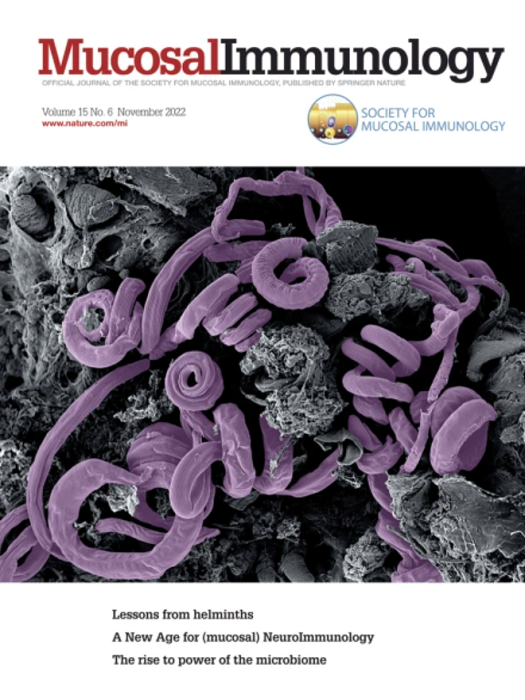微生物群通过激活TCR和IL-15信号通路促进CD39在γδ上皮内淋巴细胞中的表达。
IF 7.6
2区 医学
Q1 IMMUNOLOGY
引用次数: 0
摘要
上皮内淋巴细胞表达γδ T细胞受体(γδ IEL)提供肠上皮的连续监测。我们报道了具有微生物群特异性高增殖γδ IEL (γδ hyp)表型的小鼠也上调了外核苷酶CD39的表达,CD39是调节性γδ T细胞的标记物。TCR和IL-15信号的增强与naïve-like CD39neg γδ IEL向更成熟、组织适应的CD39hi IEL群体的进展相关。我们发现TCR γδ活化驱动cd122介导的CD39在γδ hyp IELs上的上调,而粘膜IL-15的增加进一步放大了这些细胞中CD39的表达。进一步的研究表明,CD39的诱导需要持续暴露于γδ hyp相关的微生物群中。此外,CD39hi γδ IELs产生促炎细胞因子的能力降低,这可能解释了γδ hyp小鼠缺乏组织病理学。总的来说,我们的研究确定了一种以前未被认识到的机制,通过这种机制,改变的微生物群放大了γδ hyp IELs上CD39的表达,导致具有调节潜力的γδ IELs的扩增。本文章由计算机程序翻译,如有差异,请以英文原文为准。
Microbiota promote enhanced CD39 expression in γδ intraepithelial lymphocytes through the activation of TCR and IL-15 signaling
Intraepithelial lymphocytes expressing the γδ T cell receptor (γδ IEL) provide continuous surveillance of the intestinal epithelium. We report that mice harboring a microbiota-specific hyperproliferative γδ IEL (γδHYP) phenotype also upregulate the expression of the ectonucleotidase CD39, a marker of regulatory γδ T cells. Enhanced TCR and IL-15 signaling correlates with a progression from a naïve-like CD39neg γδ IEL to a more mature, tissue-adapted CD39hi IEL population. We found that TCRγδ activation drives CD122-mediated CD39 upregulation on γδHYP IELs and increased mucosal IL-15 further amplifies CD39 expression in these cells. Further investigation revealed that CD39 induction requires sustained exposure to the γδHYP-associated microbiota. Moreover, CD39hi γδ IELs exhibit a reduced capacity to produce pro-inflammatory cytokine, which may explain the lack of histopathology in γδHYP mice. Overall, our study identifies a previously unappreciated mechanism by which an altered microbiota amplifies CD39 expression on γδHYP IELs, leading to the expansion of γδ IELs with regulatory potential.
求助全文
通过发布文献求助,成功后即可免费获取论文全文。
去求助
来源期刊

Mucosal Immunology
医学-免疫学
CiteScore
16.60
自引率
3.80%
发文量
100
审稿时长
12 days
期刊介绍:
Mucosal Immunology, the official publication of the Society of Mucosal Immunology (SMI), serves as a forum for both basic and clinical scientists to discuss immunity and inflammation involving mucosal tissues. It covers gastrointestinal, pulmonary, nasopharyngeal, oral, ocular, and genitourinary immunology through original research articles, scholarly reviews, commentaries, editorials, and letters. The journal gives equal consideration to basic, translational, and clinical studies and also serves as a primary communication channel for the SMI governing board and its members, featuring society news, meeting announcements, policy discussions, and job/training opportunities advertisements.
 求助内容:
求助内容: 应助结果提醒方式:
应助结果提醒方式:


